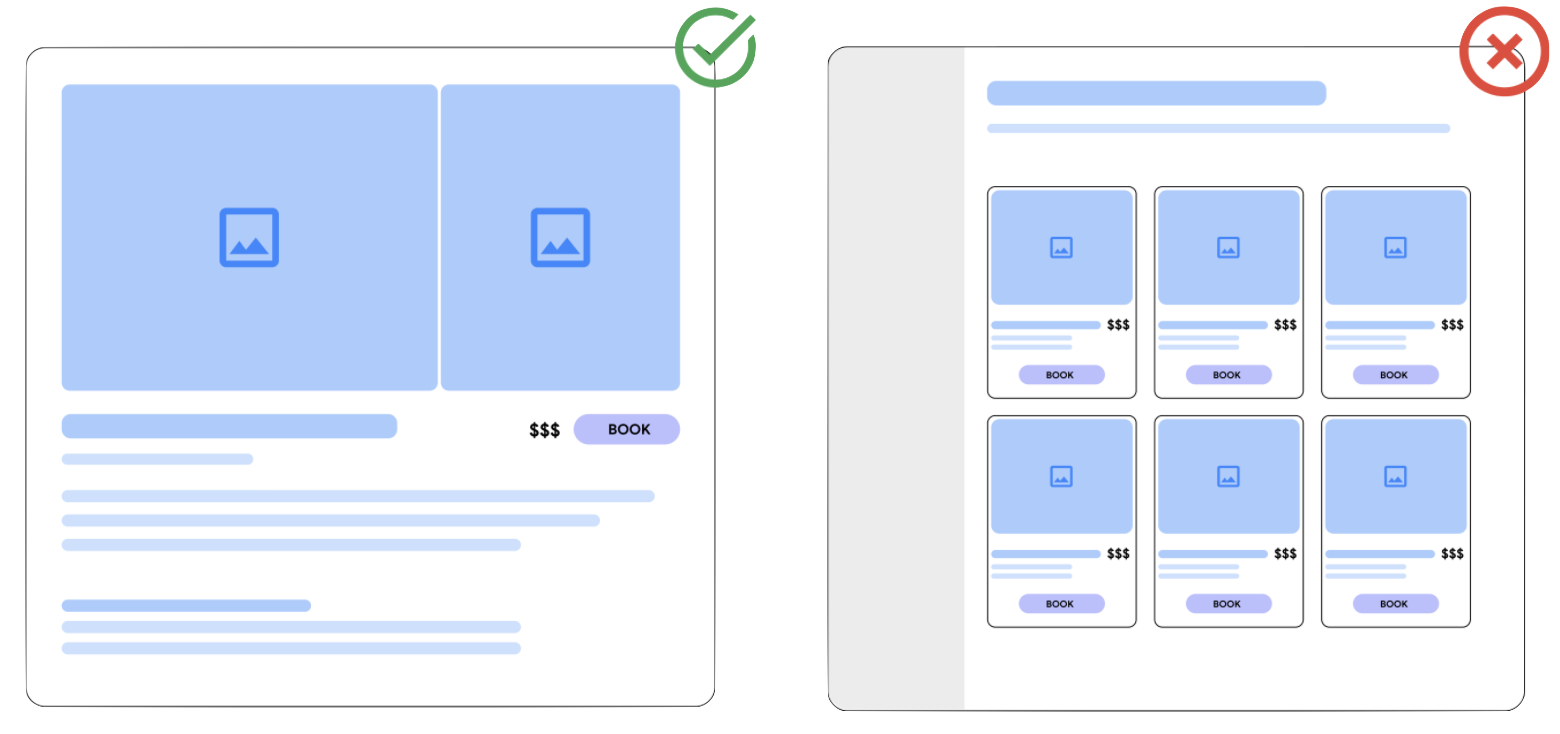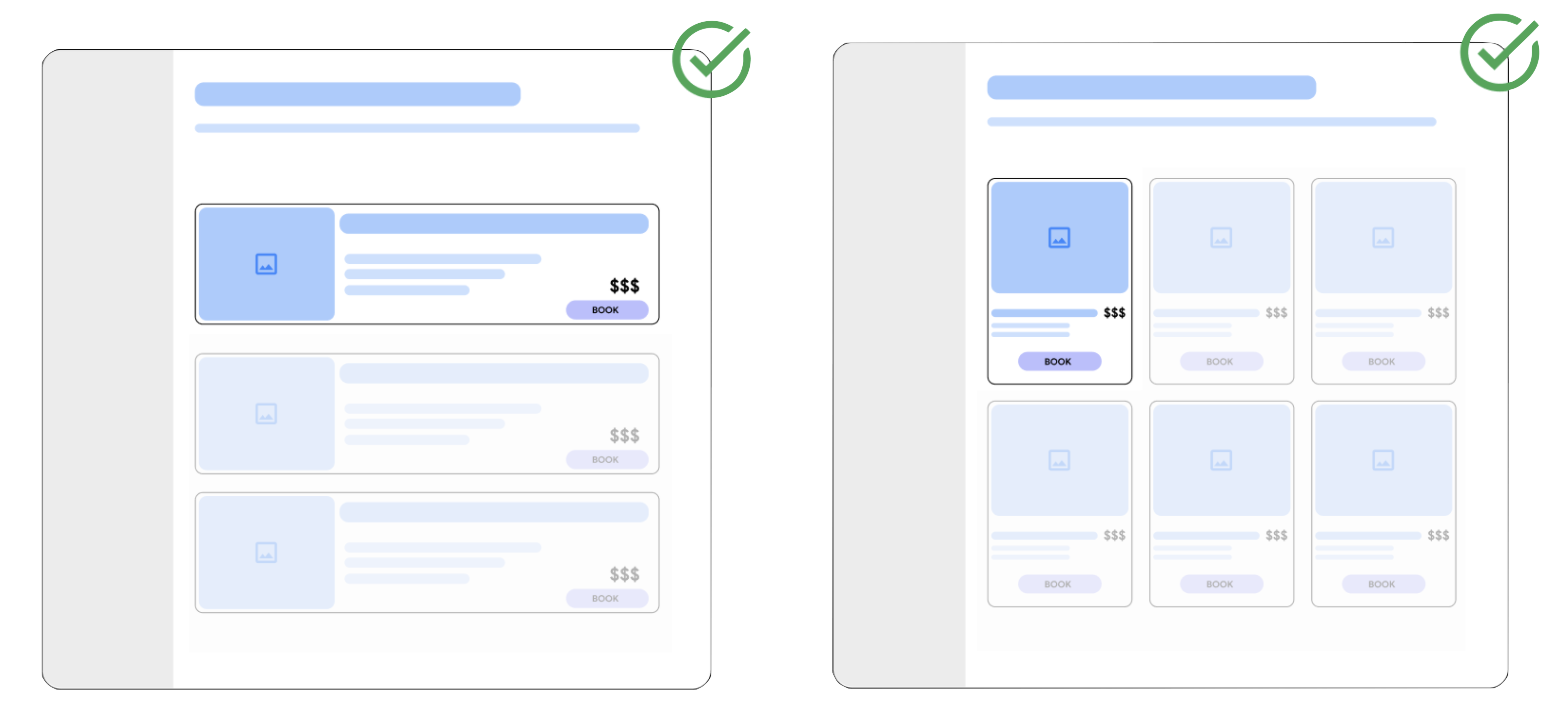着陆页是指用户在 Google 上点击 TTD 产品后转到的页面。当着陆页内容与您的广告或非付费商品详情不符时,用户很可能会离开您的网站而不购买任何东西。如需展示商品的广告和非付费商品详情,您提交到 Feed 的所有着陆页都需要满足下列最低要求。
着陆页深层链接(推荐活动搜索功能所必需)
着陆页深层链接由 landing_page 字段提供。这应是一个着陆页,用于显示商品或商品选项的所有关键元素。包括商品名、属性、说明、价格、币种以及开始结账流程的按钮。商品名、属性、说明和图片不一定要与商品 Feed 中的内容完全相同,但它们必须指的是同一件商品。
Feed 中的每件商品或选项都应是其关联的商品页面上最显眼的商品。如果您的商品页面上有多件商品(例如不同的选项或其他类似的商品),那么 Feed 中提供的相应商品或选项必须是最醒目突出的那一件商品。不允许将类别页或列表页用作商品页(请参阅下文,详细了解类别页或列表视图页)。

着陆页列表视图(可选)
除了必需的商品页面之外,您还可以选择为商品或选项提供 landing_page_list_view。着陆页列表视图应满足以下要求:
当用户到达合作伙伴的网站后,应能轻松找到其在 Google 上点击的商品。因此,此类内容必须在着陆页上的显眼位置显示。
商品的价格应一目了然,并与合作伙伴在商品目录 Feed 中向 Google 提供的价格一致。如果着陆页上显示有多个价格,则广告商品的价格必须最为显眼。
用户到达的着陆页应易于导航,方便预订所选产品。Google 要求合作伙伴为用户所选的商品和价格提供一致的信息,并为用户在 Google 上找到的商品提供明确的预订方法。
Google 明白,各个合作伙伴网站的设计方式都有所不同。为便于理解,下面举例说明了哪些位置可能会被视为显眼的展示位置:
此商品比其他商品更大,并且位于页面上的最高位置。
当前商品在网页上突出显示(例如采用更大的尺寸或不同的颜色)。
当前商品固定显示在页面的右侧或左侧,与网页上的其他商品区分开来。
避免使用会隐藏着陆页关键元素的布局。例如,弹出式窗口或下载横幅不应遮挡或干扰客户阅读重要信息。

网站图标
Google 可能会将着陆页上的图标用作界面的一部分。为确保使用正确的 Favicon,请确保 Google 已为深层链接编入索引。您可以使用网址检查工具确保网址已正确编入索引。
何时使用 landing_page 和 landing_page_list_view
最终在 Google 上的商家信息中显示哪个网页取决于具体途径。对于漏斗上端的查询和付费商品详情,列表视图页面优先,而在所有其他体验中,系统会使用商品页面。
